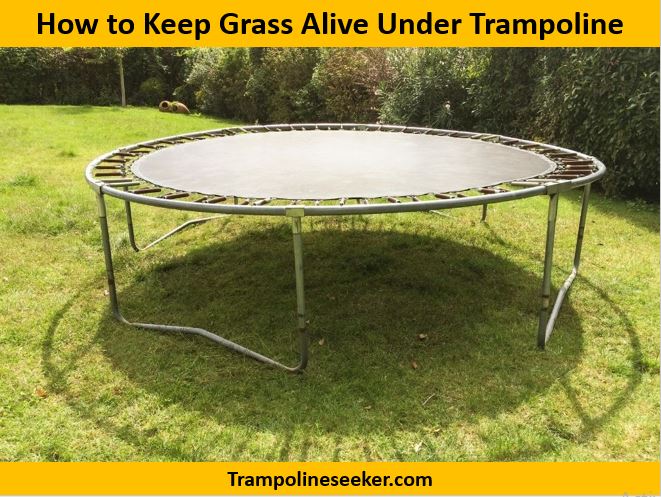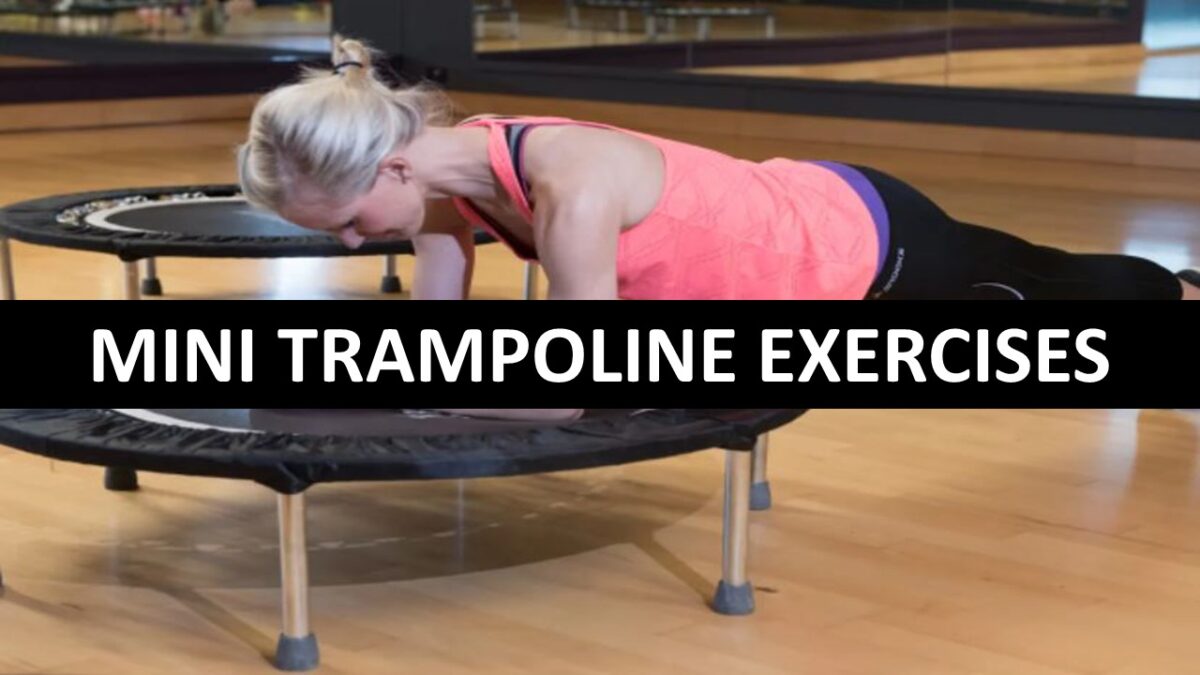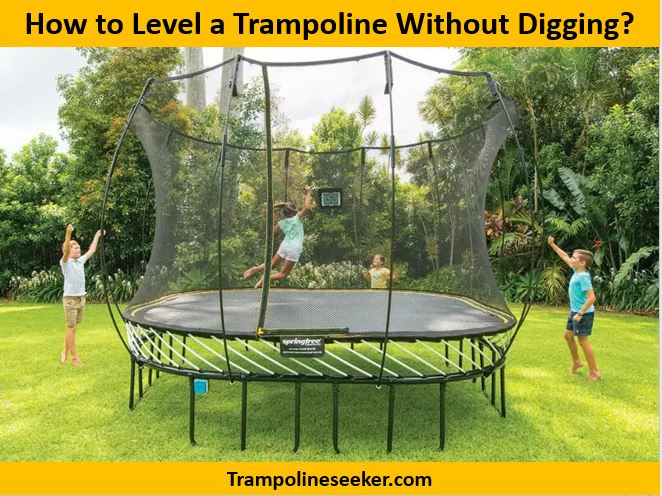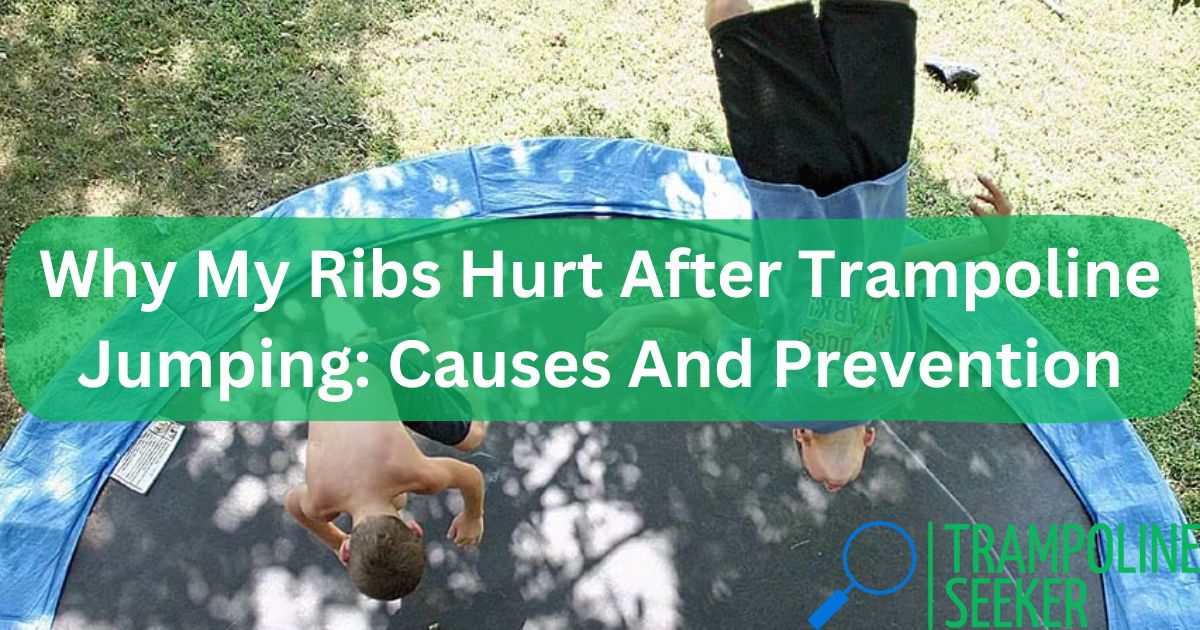Springfree trampolines are designed using composite fiberglass rods instead of traditional metal springs, creating a soft, smooth bounce. Their safety enclosures also utilize flexible nets and poles rather than hard steel frames. While incredibly fun, this specialized equipment requires particular maintenance and care compared to basic spring trampolines.
Properly caring for your Springfree trampoline ensures safety, maximizes durability, and prevents costly repairs down the road. From cleaning the mat to winterizing the poles, this guide covers routine maintenance tasks and what to inspect regularly. I’ll also provide tips to detect early signs of wear before they become problematic.
Follow these Springfree trampoline care tips and you’ll keep your trampoline bouncing like new for years of family fun.
5 Tips and Tricks for Springfree Trampolines Maintenance
1. Regular Cleaning
A dirty trampoline mat not only looks bad, but it can also lead to premature deterioration and compromised traction. Here are some cleaning tips to maintain a fresh-looking jumping surface:
Remove Debris
Before wetting the mat, thoroughly sweep off any leaves, grass clippings, seed pods, pollen, twigs or other yard debris. This prevents debris from forming a barrier between cleaning solutions and the mat surface. Pay special attention to gaps along the perimeter.
Wash the Mat
Every few weeks, mix warm water and a small amount of mild dishwashing liquid. Apply over the entire mat surface using a soft-bristle brush. Avoid harsh detergents or chemical cleaners which could damage the synthetic mat fibers.
Rinse Well
After scrubbing the soiled areas, thoroughly rinse away all suds and residue which can leave slippery surfaces. I use a low-pressure garden hose sprayer.
Dry Completely
Before allowing kids back onto the wet trampoline, make sure the mat dries fully to prevent slips and moisture damage over time.
2. Rods and Net Poles
The flexible fiberglass rods and poles securing the safety enclosure nets are just as crucial to inspect and care for over time:
Inspect Rod Sheaths
Check regularly for cracks in the plastic rod sheathing which protect the glass fiber cores. If compromised, the rods will deteriorate rapidly. Replace immediately if damage is spotted.
Confirm Rod Connections
Ensure all rods remain securely attached to the mat edge using the end C-clips and SoftEdge mat connectors. Fully inserted poles help stabilize the enclosure nets.
Check Net Inserts
Verify net pole sleeves fit snugly over the vertical black net inserts, keeping the flexible nets taut for safety. Gaps lead to drooping nets which can be a tripping hazard.
Lubricate Zippers
Apply mild soap or dedicated zip lube along the safety enclosure entrance zipper teeth to maintain smooth operation. Kids are much more inclined to re-close the secured gate if zips glide easily.
3. Frame Inspection
The steel frame of a Springfree holds enormous tension courtesy of the stretched mat and nets. Thus, immediate investigation of damage is imperative:
Assess for Bends
Stand back and examine the frame shape, ensuring it remains structurally sound without bends. Irregularities indicate potential weakness requiring specialist inspection.
Check Joint Fit
Where metallic rods connect into frame sockets, confirm proper alignment without gaps potentially signaling damage from past stresses.
Inspect for Rust
Scan the painted steel frame, especially along welds or joints, looking for paint cracking or metal rusting which accelerates deterioration. Spot clean and treat areas of concern promptly.
Unclog Drain Holes
Use a stick to clear accumulated dirt or debris from drainage holes integrated along the frame underside. Allowing moisture to pool accelerates rust and corrosion issues.
4. Extreme Weather Precautions
While Springfree trampolines are built of quality materials to withstand year-round outdoor installation, seasonal preparation assists with equipment longevity.
Clear Snow Buildup
Use a soft-bristle broom to regularly sweep snow off the mat before it can accumulate excess weight and overstress components. Do not pound ice or use sharp tools which can puncture.
Install Anchors
In climates prone to high winds, professionally installed in-ground anchors provide valuable stability and prevent the unit from blowing about, causing safety hazards and property damage.
Disconnect Electronics
If using the Springfree Tgoma electronic recreation system, uninstall sensitive components like game controllers, battery packs and tablet holders during extreme low temperatures or major storms. Store safely indoors.
5. Replacing Parts Over Time
With proper care and maintenance, Springfree trampolines are built to deliver years of performance. But certain components still wear out naturally over time:
New Safety Pads
While thick foam pads cover the outer frame and springs providing a cushioned bounce surface, eventually they compact and lose shock absorption. Replace.
Upgrade Safety Nets
UV rays eventually degrade the woven polyethylene netting despite chemical treatments. Stretching and sagging leads to less secure fall protection.
Refresh Mat Rods
Within warrantied limits, broken or damaged fiberglass rods get replaced for free. But general exposure still weakens resilience. Proactive replacement maintains optimal bounce.
Consider Mat Upgrade
With extensive use over 5-10 years, trampoline mats show significant visible wear despite rotation and care. Upgrading maintains top performance.
Final Springfree Maintenance Tips
Follow this closing list of Springfree trampoline care advice for best results:
- Remove debris before wet cleaning
- Frequently inspect rods, nets and frames
- Treat frame rust when first spotted
- Clear snow carefully without puncturing
- Replace well-worn parts as needed
- Store electronics properly during storms
- Anchor against high winds as necessary
Properly caring for your Springfree trampoline takes a small time investment but pays off for years in safety, performance and family enjoyment.
I hope these comprehensive cleaning, inspection, replacement and weatherproofing guidelines provide helpful guidance to maintain your Springfree trampoline in optimal shape! Let me know in the comments if you have any other tips to share.
Must Read: Are Springfree Trampolines Worth The Money?
Frequently Asked Questions
What is the best way to clean bird droppings or tree sap off my Springfree mat?
Bird droppings and tree sap can be notoriously difficult to remove once baked on a hot mat surface. For best results, try blotting up fresh deposits immediately using damp paper towels or rags. Then spot treat hardened residue using baking soda as a gentle abrasive mixed with dishwashing liquid and warm water.
How do I know when to replace my Springfree safety enclosure net?
There are a few clear indicators that your trampoline enclosure netting needs replacing: UV damage causing brittleness and tears, excessive stretching leading to sagging, holes or gaps forming near the mat edge. If the net shows significant signs of wear, replacement is likely the best option rather than a patch job.
Can I leave my Springfree trampoline outside all winter without disassembling it?
Springfree trampolines are designed for year-round outdoor installation. As long as you regularly clear snow accumulation from the mat, properly winterize any electronic Tgoma components, and anchor the unit if in a windy region, leaving the equipment permanently outside is perfectly acceptable according to the manufacturer.
What household materials should be avoided on my Springfree mat?
While the woven synthetic mat fibers are quite durable, it’s smart to keep a few items off your Springfree trampoline mat to prevent premature damage: sharp objects like sticks, rocks or garden tools can snag or puncture; clear plastic toys can focus sunlight into hot spots; harsh chemicals could degrade materials over time.
How often should I reorder replacement parts for my aging Springfree trampoline?
Springfree (Seller Website) recommends inspecting your trampoline before each use season and replacing any visibly worn parts that could pose safety or performance concerns – so frequency depends on your unit’s age and condition. Some components like net poles and mat rods face more wear than frames. Budgeting for upgrades every 5-7 years is reasonable.
Articles You May Like to Read:
| Trampoline Vs Pool |
| Best 17 Foot Trampoline |
| Are Expensive Trampolines Worth It? |
| What to Wear on a Trampoline or At Trampoline Parks? |
| Why Does Jumping On A Trampoline Make You So Tired? |
Download this Article in Pdf Format:













